In my experience of teaching, I have noticed that conveying the message about meso compounds is a lot easier when Fischer projections are used. So, we will talk about it by drawing the Fischer projections of three isomers of 2,3-dichlrobutane:
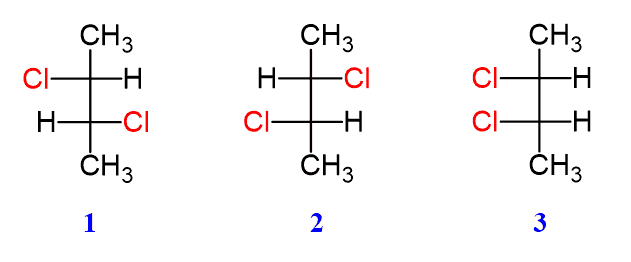
Here is how you recognize the meso isomer: it is the one that contains a plane of symmetry.
Out of the three, it is only the last one that has a plane of symmetry. It cuts the molecule in two, mirror-reflected halves:
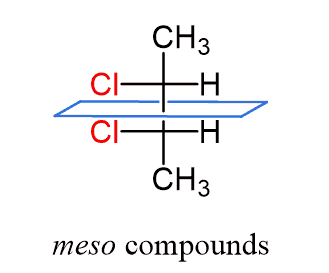
One important clarification before we finalize the statement about meso compounds.
A meso compound must contain chirality centers. This means that not any molecule that has a plane of symmetry is a meso compound. For example:

Let’s get back to 2,3-dichlrobutane for additional details that are very important.
Notice that the first two isomers are nonsuperimposable mirror images. Therefore, they are enantiomers.
And to clarify why they nonsuperimposable, rotate the right isomer 180o to have it look like the left one and you will notice that the positions of Br groups are different, i.e. it does not represent the same molecule:

You can also check this by assigning the R and S configuration. It is inverted from 2R, 3S to 2S, 3R which confirms that they are enantiomers.

Here is the important part about the meso isomer! Unlike the first two, it does NOT have an enantiomer!
Why?
To answer this question, go ahead and draw its mirror image since enantiomers are mirror images:
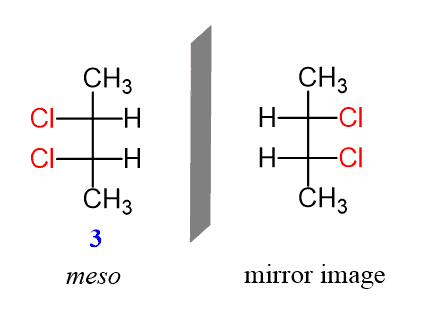
At first, these may look like a pair of enantiomers. However, if you flip any of them, you can see that it represents the same molecule as its mirror image:

In other words, it is superimposable to its mirror image which means the two structures represent the same molecule. Therefore, a meso compound cannot have an enantiomer.
This is consistent with what we discussed in the beginning of stereochemistry-any object has a mirror image, but only chiral objects are nonsuperimposable to their mirror images. And these mirror images are called enantiomers.
Features of Meso Compounds
Let’s emphasize a few important observations:
1) Meso compounds are achiral
- This, in turn, means that meso compounds are optically inactive.
Yes, meso compounds do have chiral centers but they are all inverted. Every R is inverted to S and every S is inverted into R:

It is similar to having a racemic mixture where equal amounts of R and S configurations of the same carbon are present. They cancel out the rotation of plane-polarized light making the mixture optically inactive.
2) Meso compounds cannot have enantiomers
- Like any other molecule that is not chiral, meso compounds cannot have enantiomers since their mirror image represents the same compound:

Wedge and dash in Meso compounds
Sometimes, it is not obvious to spot the meso isomer when it is drawn in bond-line representation. The reason is that it is tempting to assume that the meso isomer is the one with all wedge or all dashed lines since it looks like there is a plane of symmetry.
For example, which of the isomers is a meso compound?

It looks like it is possible to place a plane of symmetry between the two bromines of the first isomer:
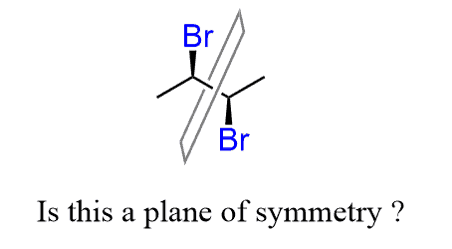
However, notice that even though the Br groups are on the same side (both wedge), they are still pointing in opposite directions – up and down. Therefore, they are not reflected through a plane of symmetry:
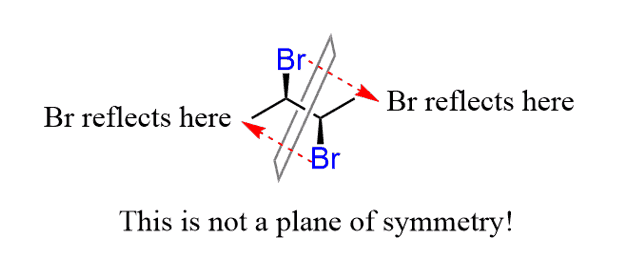
The second isomer, on the other hand, does have a plane of symmetry! Yes, the Br groups are on opposite sides (wedge and dash), however, if we rotate about the central sigma bond, they both appear right next to each other:

To summarize, if you are asked to draw the meso isomer of a plain bond-line structure, you have two options. One is two draw the carbon chain in a regular zig-zag form and have the identical groups on the chiral carbon on opposite sides (wedge-dash):

And the other is to draw the carbon chain with these two groups pointing to the same direction having either both wedge or both dash lines (which is the same molecule since it is a meso compound).



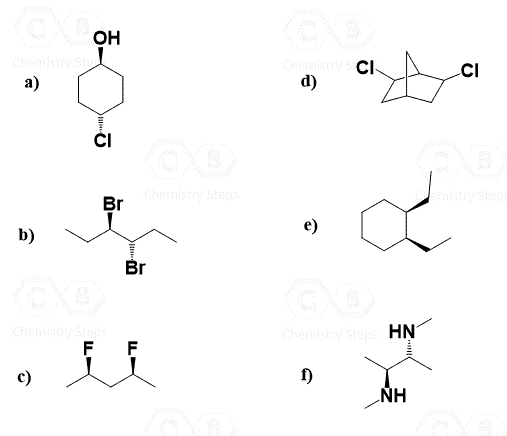

I needed to review this concept and the trick about the wedge and dash notation for the alkyne quiz. Thanks for linking them.
You are welcome, Autumn. It’s good to hear this feedback.
So much information. Thank you, sir!
Hi, why is the c) from exercise 2 chiral?
You need to pay attention to the configuration of the methyl groups and determine whether it allows to have a plane of symmetry. I wrote more about it in the answer to the problem.
Hello, the logic applied for meso compound where both the Cl are on the same side, can be applied for the one with Cl on different sides. From that, we get the same compound like meso one, but that would be wrong. Please clarify.
I am not following your question. Can you elaborate if it is about an example in this article and if yes, what molecule it is referred to?
why 1. a) is meso? I thought it doesn’t have chiral centers. Thank you in advance.
Yes, it’s not a meso compound. Thanks for letting me know!